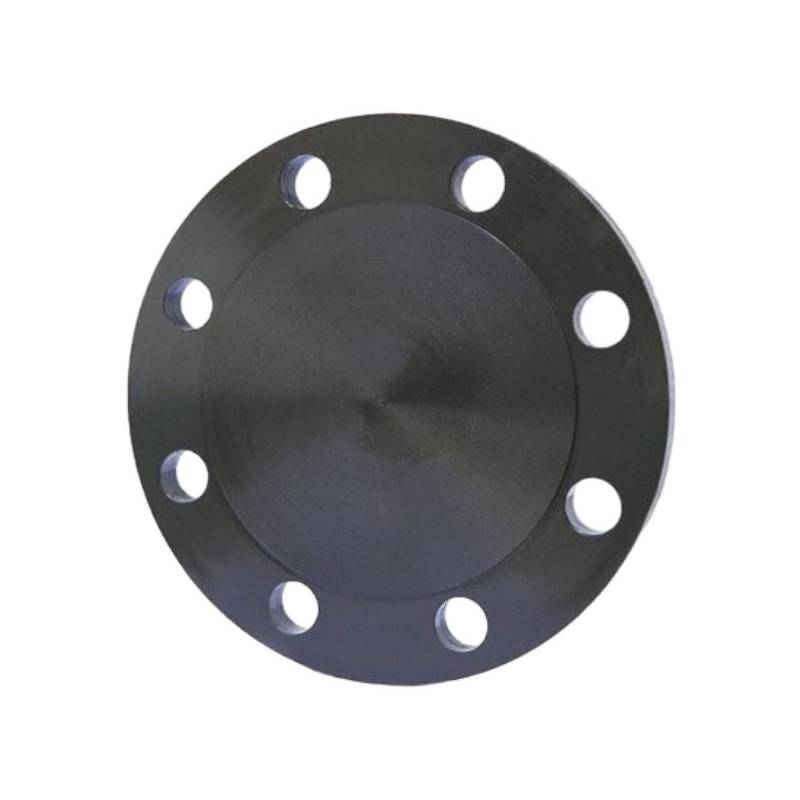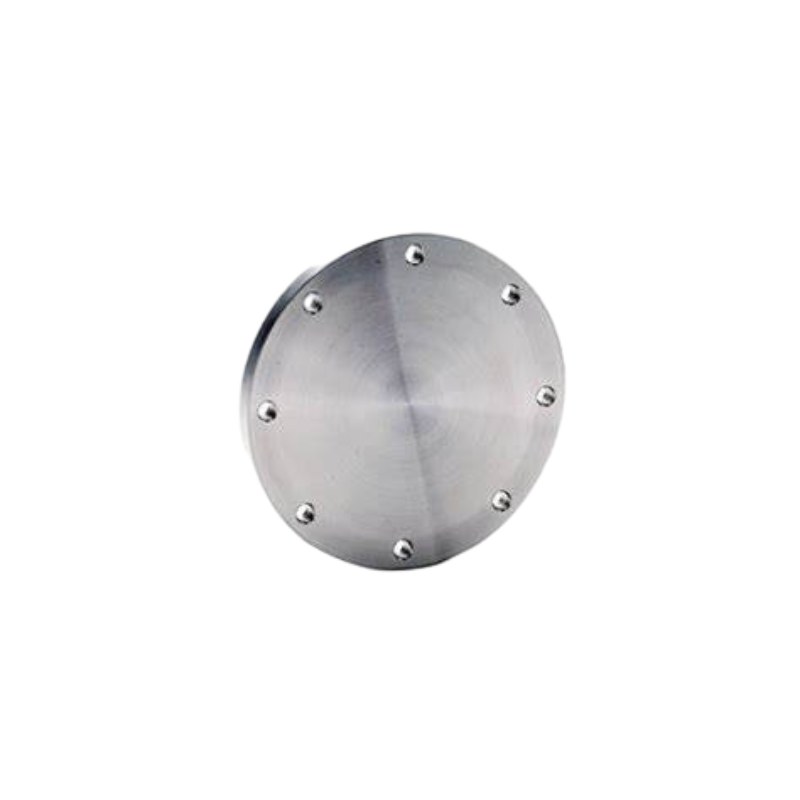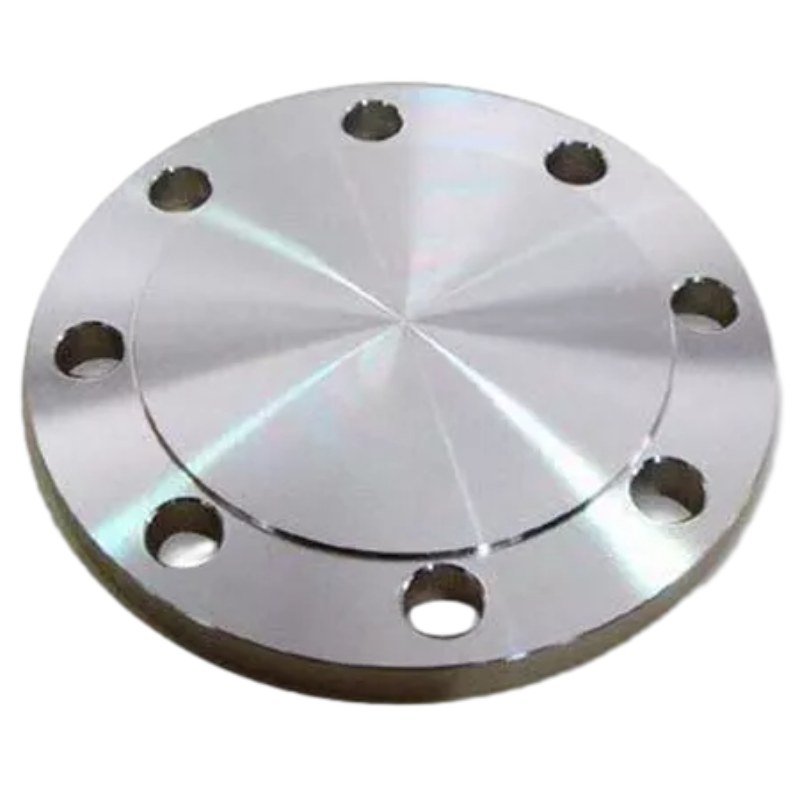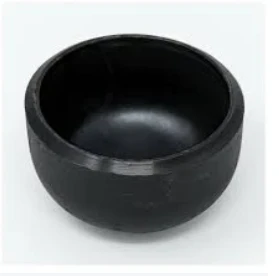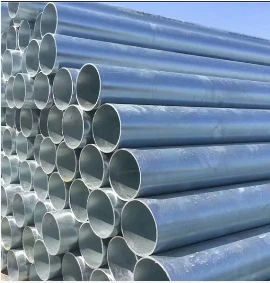-
Здрав дизайн: Слепият фланец GOST 12836-67 включва плоска кръгла плоча с равномерно разположени отвори за болтове по периметъра. Този дизайн позволява лесно подравняване и завинтване към свързващия фланец, осигурявайки здраво и стабилно решение за затваряне на тръбопроводни системи.
-
Сигурно запечатване: Когато се монтира в края на тръбата, плоската повърхност на глухия фланец GOST 12836-67 създава плътно уплътнение, предотвратявайки изтичане на течност и поддържайки целостта на тръбопроводната система. Тази сигурна способност за запечатване гарантира оптимална производителност и безопасност, дори при екстремни работни условия.
-
Гъвкаво приложение: От нефтени и газови рафинерии до химически преработвателни заводи и водоразпределителни мрежи, глухите фланци GOST 12836-67 намират многостранно приложение в различни индустрии. Независимо дали се използват за изолационни цели, изпитване под налягане или временно затваряне, тези фланци предлагат надеждност и издръжливост в критични тръбопроводни системи.
-
Издръжлива конструкция: Изработени от висококачествени материали като въглеродна стомана, неръждаема стомана или легирана стомана, глухите фланци GOST 12836-67 показват изключителна здравина и издръжливост. Те са проектирани да издържат на тежки условия на работа, включително корозивни среди, високи температури и интензивен натиск, като гарантират дългосрочна производителност и надеждност.
-
Прецизно инженерство: GOST 12836-67 Глухите фланци се подлагат на прецизна обработка и инженерни процеси, за да отговарят на стриктни толеранси на размерите и изисквания за повърхностно покритие. Тази прецизност гарантира съвместимост и взаимозаменяемост с други стандартни фланци, улеснявайки безпроблемното интегриране в тръбопроводните системи и минимизирайки риска от течове или повреди.
-
Лесна инсталация: Инсталирането на глухи фланци по ГОСТ 12836-67 е ефективно и лесно, като изисква просто подравняване и завинтване към края на тръбата. Техните стандартизирани размери и дизайн улесняват лесното интегриране в съществуващи тръбопроводни мрежи, минимизирайки времето за монтаж и разходите за труд.
Основни функции:
- Здрав дизайн за сигурно затваряне
- Сигурно запечатване с дизайн с плоска повърхност
- Гъвкаво приложение в различни индустрии
- Устойчива конструкция за дълготрайна работа
- Прецизно инженерство за тесни допуски
- Лесен монтаж с лесно подравняване и завинтване
Material Selection for GOST 12836-67 Blind Flanges: What You Need to Know
When it comes to GOST 12836-67 blind flanges, selecting the appropriate material is crucial for ensuring functionality, safety, and longevity in various applications. GOST standards, established by the Euro-Asian Council for Standardization, Metrology and Certification, guide the specification of materials to maintain the integrity of piping systems.
Key Considerations for Material Selection:
1. Corrosion Resistance: One of the primary factors in choosing a material for GOST blind flanges is its ability to resist corrosion. Stainless steel (such as 304, and 316) is a popular choice due to its excellent resistance to oxidizing environments. For applications involving aggressive chemicals, alloys like Inconel or Monel are often considered.
2. Pressure and Temperature Rating: GOST blind flanges need to be rated for the specific pressure and temperature conditions they will face. Material selection must align with the service conditions to avoid failure. For high-pressure applications, carbon steel flanges can be suitable, provided they are properly treated or coated.
3. Weldability and Machinability: Depending on installation requirements, the selected material should offer appropriate weldability and machinability. If modifications or on-site fabrication are necessary, choosing materials that can be easily welded is essential.
4. Standards Compliance: Ensure that the materials selected comply with all relevant GOST standards. This not only guarantees quality but also maintains compatibility within the piping system.
5. Cost-effectiveness: While material selection should prioritize performance and safety, cost considerations also play a significant role, especially in large-scale projects. Finding a balance between budget and quality is essential.
Differences Between GOST 12836-67 Blind Flange and Other Flange Standards
When comparing the GOST 12836-67 blind flange with other flange standards, several key differences emerge that reflect the unique characteristics and applications of the Russian standard. The GOST (Gosudarstvennyy Standart) system is a set of regulations and guidelines that govern various industrial products, including blind flanges, which are used to seal off piping systems.
One of the primary differences lies in the dimension and pressure rating classifications. GOST 12836-67 blind flanges are specifically designed according to Russian specifications, with dimensions that may differ significantly from those outlined in ANSI, ASME, or ISO standards. For instance, while ANSI/ASME flanges are typically categorized into nominal pipe sizes (NPS) and pressure classes, GOST flanges feature a unique set of sizes and pressure ratings, making it essential for engineers to select the appropriate type based on regional standards.
Another notable difference is the material composition. The GOST standard emphasizes the use of specific materials that are suited for the harsh Russian climate and industrial requirements. While common materials such as carbon steel and stainless steel are also used in other standards, GOST may specify additional material grades to accommodate unique environmental challenges, including extreme temperatures and corrosive conditions.
Additionally, the manufacturing and testing processes for GOST 12836-67 blind flanges are subject to local industry regulations, which might include stricter quality assurance protocols compared to other international standards. This ensures that the flanges not only meet dimensional specifications but also effectively withstand the pressures and temperatures expected in typical applications within Russia.
In summary, while GOST 12836-67 blind flanges share similarities with other flange standards, their unique dimensions, material requirements, and quality assurance processes set them apart. Understanding these differences is crucial for engineers and designers when selecting flanges for specific applications in diverse geographical locations.








